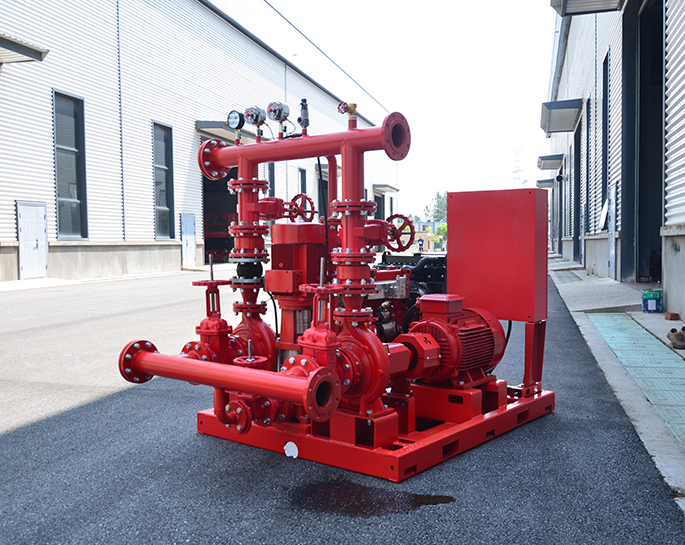What are the different types of fire pump drivers, and how do they differ?
May 07, 2024
Share:
Fire pump drivers are crucial components in fire protection systems, providing the necessary power to drive fire pumps that supply water to sprinkler systems or hydrants for fire suppression. The main types of fire pump drivers include:
1. Electric Motors: Electric motors are a common choice for fire pump drivers due to their reliability, simplicity, and ease of maintenance. They typically require less space than other types of drivers and are suitable for indoor installations where exhaust emissions from internal combustion engines may be a concern. Electric motors provide consistent power output and can be easily integrated with building automation systems for remote monitoring and control.
2. Diesel Engines: Diesel engines are often used as fire pump drivers in situations where electric power is unreliable or unavailable. They offer the advantage of being self-contained units that can operate independently of external power sources, making them suitable for remote or off-grid locations. Diesel engines can provide high power output and are well-suited for outdoor installations, but they require regular maintenance and fuel supply.
3. Gasoline Engines: Gasoline engines are similar to diesel engines but use gasoline as fuel instead. They are less commonly used for fire pump drivers due to safety concerns associated with gasoline storage and handling. Gasoline engines may be employed in situations where diesel fuel is not readily available or where specific operational requirements dictate their use.
4. Turbine Engines: Turbine engines, such as gas turbines or steam turbines, are occasionally used as fire pump drivers, particularly in high-rise buildings or industrial facilities with large water demand. Turbine engines offer high power-to-weight ratios and can rapidly ramp up to full power, making them suitable for applications requiring quick response times. However, they tend to be more complex and expensive than other types of drivers, and their use is generally limited to specialized applications.
Each type of fire pump driver has its advantages and limitations, and the choice of driver depends on factors such as power requirements, available space, environmental considerations, and budget constraints. Additionally, local building codes and regulations may dictate specific requirements for fire pump drivers in different jurisdictions.

1. Electric Motors: Electric motors are a common choice for fire pump drivers due to their reliability, simplicity, and ease of maintenance. They typically require less space than other types of drivers and are suitable for indoor installations where exhaust emissions from internal combustion engines may be a concern. Electric motors provide consistent power output and can be easily integrated with building automation systems for remote monitoring and control.
2. Diesel Engines: Diesel engines are often used as fire pump drivers in situations where electric power is unreliable or unavailable. They offer the advantage of being self-contained units that can operate independently of external power sources, making them suitable for remote or off-grid locations. Diesel engines can provide high power output and are well-suited for outdoor installations, but they require regular maintenance and fuel supply.
3. Gasoline Engines: Gasoline engines are similar to diesel engines but use gasoline as fuel instead. They are less commonly used for fire pump drivers due to safety concerns associated with gasoline storage and handling. Gasoline engines may be employed in situations where diesel fuel is not readily available or where specific operational requirements dictate their use.
4. Turbine Engines: Turbine engines, such as gas turbines or steam turbines, are occasionally used as fire pump drivers, particularly in high-rise buildings or industrial facilities with large water demand. Turbine engines offer high power-to-weight ratios and can rapidly ramp up to full power, making them suitable for applications requiring quick response times. However, they tend to be more complex and expensive than other types of drivers, and their use is generally limited to specialized applications.
Each type of fire pump driver has its advantages and limitations, and the choice of driver depends on factors such as power requirements, available space, environmental considerations, and budget constraints. Additionally, local building codes and regulations may dictate specific requirements for fire pump drivers in different jurisdictions.


.png)
.png)

.png)


